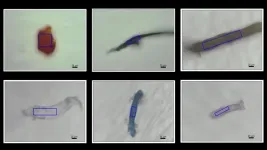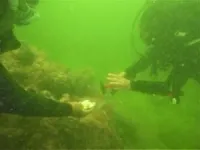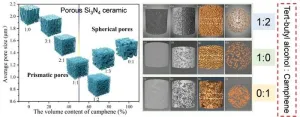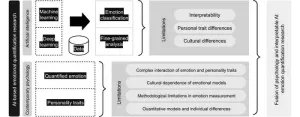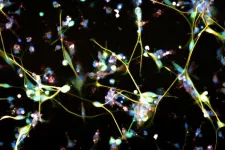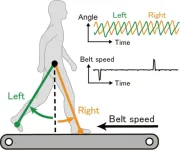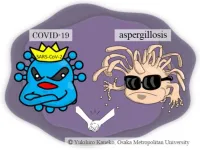(Press-News.org)
Fukuoka, Japan—Researchers from Japan and Thailand investigating microplastics in coral have found that all three parts of the coral anatomy—surface mucus, tissue, and skeleton—contain microplastics. The findings were made possible thanks to a new microplastic detection technique developed by the team and applied to coral for the first time.
These findings may also explain the ‘missing plastic problem’ that has puzzled scientists, where about 70% of the plastic litter that has entered the oceans cannot be found. The team hypothesizes that coral may be acting as a ‘sink’ for microplastics by absorbing it from the oceans. Their findings were published in the journal Science of the Total Environment.
Humanity’s dependence on plastics has brought unprecedented convenience to our lives but has caused untold damage to our ecosystem in ways researchers are still beginning to understand. In the oceans alone, it is estimated that 4.8–12.7 million tons of plastics flow into the marine environment annually.
“In Southeast Asia, plastic pollution has become a significant issue. Collectively, nearly 10 million tons of plastic waste are dumped annually, equivalent to 1/3 of the world’s total,” explains Assistant Professor Suppakarn Jandang from Kyushu University’s Research Institute for Applied Mechanics (RIAM) and first author of the study. “Some of this plastic is discharged into the ocean, where it degrades into microplastics.”
To study the plastic pollution problem in Southeast Asia, RIAM partnered with Thailand's Chulalongkorn University in 2022 to establish the Center for Ocean Plastic Studies. The international institute is led by Professor Atsuhiko Isobe, who also led the research team behind these latest findings.
The team wanted to examine the impact of microplastics to local coral reefs, so they focused their field work on the coast of Si Chang Island in the Gulf of Thailand. The area is known for its small reef flats as well as being a common area for anthropological studies.
“Coral has three main anatomical parts: the surface mucus, the outside of the coral body; the tissue, which is the inner parts of the coral; and the skeleton, the hard deposits of calcium carbonate they produce. Our first step was to develop a way to extract and identify microplastics from our coral samples,” continues Jandang. “We put our samples through a series of simple chemical washes designed to break apart each anatomical layer. After each subsequent layer was dissolved, we would filter out the content and then work on the next layer.”
In total, they collected and studied 27 coral samples across four species. 174 microplastic particles were found in their samples, mostly ranging from 101–200 μm in size, close to the width of a human hair. Of the detected microplastics 38% were distributed on the surface mucus, 25% in the tissue, and 37% were found in the skeleton. As for types of microplastics, the team found that nylon, polyacetylene, and polyethylene terephthalate (PET) were the three most prevalent, accounting for 20.11%, 14.37%, and 9.77%, respectively, of the identified samples.
These new findings also indicate that coral may act as a marine plastic ‘sink’, sequestering plastic waste from the ocean, like how trees sequester CO2 from the air.
“The ‘missing plastic problem’ has been troubling scientists who track marine plastic waste, but this evidence suggests that corals could account for that missing plastic,” says Jandang. “Since coral skeletons remain intact after they die, these deposited microplastics can potentially be preserved for hundreds of years. Similar to mosquitos in amber.”
Further study is still necessary to understand the full impact of these findings on coral reefs and the global ecosystem.
“The corals that we studied this time are distributed all around the world. To get a more accurate picture of the situation we must conduct extensive studies globally across an array of coral species,” concludes Isobe. “We also do not know the health effects of microplastics on coral and the larger reef community. There is still much to be done to accurately evaluate the impact of microplastics on our ecosystem.”
###
For more information about this research, see "Possible sink of missing ocean plastic: Accumulation patterns in reef-building corals in the Gulf of Thailand," Suppakarn Jandang, María Belén Alfonso, Haruka Nakano, Nopphawit Phinchan, Udomsak Darumas, Voranop Viyakarn, Suchana Chavanich, and Atsuhiko Isobe, Science of the Total Environment, https://doi.org/10.1016/j.scitotenv.2024.176210
About Kyushu University
Founded in 1911, Kyushu University is one of Japan's leading research-oriented institutes of higher education, consistently ranking as one of the top ten Japanese universities in the Times Higher Education World University Rankings and the QS World Rankings. The university is one of the seven national universities in Japan, located in Fukuoka, on the island of Kyushu—the most southwestern of Japan’s four main islands with a population and land size slightly larger than Belgium. Kyushu U’s multiple campuses—home to around 19,000 students and 8000 faculty and staff—are located around Fukuoka City, a coastal metropolis that is frequently ranked among the world's most livable cities and historically known as Japan's gateway to Asia. Through its VISION 2030, Kyushu U will “drive social change with integrative knowledge.” By fusing the spectrum of knowledge, from the humanities and arts to engineering and medical sciences, Kyushu U will strengthen its research in the key areas of decarbonization, medicine and health, and environment and food, to tackle society’s most pressing issues.
END
(WASHINGTON, September 20, 2024) –The incidence of stroke continues to increase for adults and children living with sickle cell disease (SCD) despite the Stroke Prevention Trial in Sickle Cell Anemia (STOP) establishing standards of care like transfusions and tests to measure blood flow in the brain for those deemed high-risk, according to a study published today in Blood.
Individuals living with SCD, the most common inherited red blood cell disorder in the United States, are especially susceptible to cerebrovascular events (CVEs). This includes ischemic or hemorrhagic strokes, when a blood vessel leading to the brain is ...
Radomes and wave-transmitting antenna windows are critical structural components in aircraft, protecting radar antennas from external interference while ensuring reliable communication. Currently, the most widely used wave-transmitting materials are ceramics based on oxides and nitrides. Si3N4 ceramics, with their high melting point and superior mechanical properties, are considered promising candidates for hypersonic vehicle applications. However, the dielectric and thermal insulation properties of dense Si3N4 ceramics need improvement to meet the precise guidance and thermal protection demands of high-speed flight. By adjusting the microstructure, it is possible to enhance the ...
A joint research team from the Renewable Energy System Laboratory and the Energy ICT Research Department at the Korea Institute of Energy Research (KIER) has developed key technologies to realize "Urban Electrification" using artificial intelligence (AI).
Urban electrification aims to reduce the use of fossil fuels and introduce renewable energy sources, such as building-integrated solar technology, to transform urban energy systems. While this concept is relatively unfamiliar in the Republic of Korea, it is being promoted as a key strategy in the U.S. and Europe for achieving carbon neutrality and creating sustainable urban environments.
In ...
Using a fusion of traditional and novel technological methods, researchers are hoping to better quantify emotions to transform the face of the emotion quantification field
Human emotions are complex and are not always easily able to be boiled down to a recognizable pattern. Determining one’s emotional state can be difficult human-to-human, and the many nuances of existence as an emotional entity seem impossible to train a non-human entity to understand, identify and learn from. However, a considerable amount of work and research has been put into training artificial intelligence (AI) to observe, quantify and recognize various states of emotion in humans. ...
Key points:
Glioblastoma is an incurable and fatal type of brain cancer.
In a large-scale drug screening, the antidepressant, vortioxetine emerged as one of the most effective agents against these types of cancer cells.
Clinical trials are already in the planning phase at the University Hospital Zurich.
Glioblastoma is a particularly aggressive brain tumour that at present is incurable. Cancer doctors can extend patients’ life expectancy through operations, radiation, chemotherapy or surgical interventions. Nevertheless, half of patients die within twelve months of diagnosis.
Drugs that are effective against brain tumours are ...
The European Union aims to be carbon-neutral by 2050 as part of the comprehensive Green Deal that was agreed upon four years ago. However, an analysis of the policy documents outlining the practical measures of the Green Deal shows that it will decrease carbon emissions in Europe, but also increase carbon emissions outside of the EU. This increase is more than double the amount of carbon emissions saved by the Green Deal. This analysis was published in Nature Sustainability on <DATE> by an international team of scientists led by Klaus Hubacek, Professor of Science, Technology and Society ...
Osaka, Japan – Walking is an activity that is often taken for granted. Most people usually think they can multitask by “walking and chewing gum” simultaneously with hardly any taxation of their mental effort. Indeed, each leg can move rhythmically independently of the other, controlled by its side of the spinal cord. However, the ability of the human brain to coordinate the gait so that a walker’s legs are half a stride out of phase with each other, called the “antiphase relationship,” is not so trivial when an obstacle or asymmetry occurs, such as a curve in the path. A better understanding of how a normal walking cadence is maintained ...
A new type of blood test using lipids could make it easier to identify children at risk of complications around obesity including type two diabetes, liver and heart disease, say scientists.
A new study from King’s College London published in Nature Medicine reveals a new relationship between lipids and diseases impacting metabolism in children, which could serve as an early warning system for conditions like liver disease.
Using machines that test blood plasma in babies that already exist in hospitals, the researchers suggest this ...
Iron is a micronutrient indispensable for life, enabling processes such as respiration, photosynthesis, and DNA synthesis. Iron availability is often a limiting resource in today’s oceans, which means that increasing the flow of iron into them can increase the amount of carbon fixed by phytoplankton, with consequences for the global climate.
Iron ends up in oceans and terrestrial ecosystems through rivers, melting glaciers, hydrothermal activity, and especially wind. But not all its chemical forms are ‘bioreactive’, that is, available for organisms ...
As society learns to live with COVID-19, research on the disease and its complications remains important. Thus, an Osaka Metropolitan University team has pored through data to understand the incidence in Japan of COVID-19-associated pulmonary aspergillosis (CAPA), a severe invasive fungal infection of the lungs.
Few studies have been conducted on CAPA in Japan, but reports from overseas put the incidence between 3.8% and 35%.
Using Japanese administrative claims data, Graduate School of Medicine Lecturer Waki Imoto, graduate student Mr. Yasutaka Ihara, Professor Ayumi Shintani, ...
